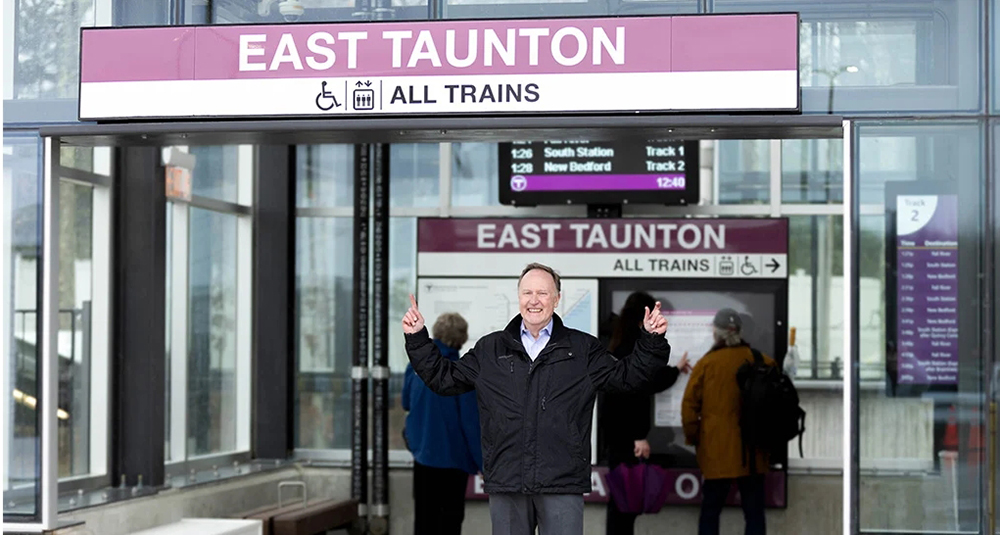Housing: We are not talking affordable housing, but rather the shortage of attainable housing - by David O'Sullivan

O'Sullivan Architects
I am writing this on the first day of spring and it is a beautiful sunny day, although a bit cool and not quite feeling like spring. I am looking forward to seeing the trees and flowers come to life and the warm days where we can enjoy the outdoors. The real estate industry feels similar with the industry still going along great but with a slight chill at times.
Our clients are still perusing new opportunities and moving ahead with the projects in the pipeline so we don’t see a slowing in the marketplace yet, but everyone seems a little more cautious these days.
I believe everyone is asking some basic questions and looking at each deal a little closer to insure success. Things we all need to determine: What are the opportunities in the marketplace this spring? What is the next correct type of project? What areas are overpriced? What areas or market segments are overbuilt? Is there an area or market type that is underserved that I could capitalize on? These are important things to consider as we enter the 10th year of an up market. Many feel it can’t last and certainly we read of warnings and concerns because this long a sustained period of growth is not typical. The common beliefs that real estate will always be a boom and bust cycle seems to be a non-issue at present.
The critics claim we have too many apartments in the luxury segment in Boston and that the market is becoming saturated. This may be the case in downtown Boston or the Seaport as not everyone wants to be in a new high-rise tower paying big rents. Many of these lease up quickly with incentives and tenants sign 2-3 year leases so when they come up for renewal, the tenants may jump to the next new tower for the incentives. As this market matures and more buildings come on line we could have too many units for the people who can afford those rents. The market for luxury condominiums seems to be fueled by the high sales prices of suburban homes of empty nesters wanting to move back into the city and foreign buyers too. There also has been a more limited number these being built so oversupply is not as much of an issue.
As far as what areas present the best opportunities for future development, we are seeing interest in areas of city farther from downtown such as Hyde Park, West Roxbury and Dorchester. The closer suburbs like Revere, Chelsea, Medford, Quincy, and Braintree are becoming desirable especially where there are subway or good commuter rail connections. The advantage of these areas is lower land cost and slightly lower construction cost so apartments and condominiums can be more reasonably priced. The disadvantage with these areas is zoning often does not allow the needed densities to make them financially feasible and neighborhood opposition is stronger making approvals longer and more expensive.
A more pressing concern for everyone is housing affordability. We are not talking affordable housing, but rather the shortage of attainable housing. When I attended last month’s International Builders’ Show, afforability was talked about quite a bit. There were several sessions dedicated to this topic alone. According to Builder Magazine, “With a shortage of attainable housing in many markets across the country, addressing the “missing middle” segment will offer significant opportunities for home builders in 2019.” Ensuring there is enough viable housing that the average person can afford will be a key trend in 2019 and beyond. This is especially acute in the Boston area with its high housing costs.
As we move into spring we are unsure if the market can be sustained or if the economy will remain strong for the coming year but realize Boston continues to have great job growth in a variety of segments and the people will need places to live, shop and play.
As building trends change and markets shift, we know creating viable housing will be an important factor in all our design concepts. Fortunately we have always been a budget conscious firm respecting builders’ constraints. We are able to help create dreams at a reasonable price point. We may just need to be even more creative with design innovations, use of materials, respecting scale of the surrounding neighborhood and addressing the neighbor’s concerns. We are definitely up to the challenge, are you?
David O’Sullivan, AIA, is the president of O’Sullivan Architects, Inc., Reading, Mass.
Check out the New England Real Estate Journal's 2025 Fall Preview Spotlight
Explore our Fall Preview Spotlight, featuring exclusive Q&As with leading commercial real estate professionals and in-depth byline articles on today’s most relevant market topics. Gain insight into the trends, challenges, and opportunities shaping New England’s commercial real estate landscape this fall.


How long should I hold a property for it to qualify as an investment property in connection with a 1031 tax-deferred exchange? - by Brendan Greene and Mark McCue

How do we manage our businesses in a climate of uncertainty? - by David O'Sullivan

30 years on South Coast Rail: A journey to connect Southeastern Mass. with commuter rail - by Rick Carey











.png)
